Welcome to the Lippert Leveling System Troubleshooting Manual. This guide provides essential information for operating, maintaining, and resolving common issues with your electronic/hydraulic leveling system. Ensure safe and effective usage by following the detailed instructions and guidelines outlined in this manual.
1.1 Overview of the Lippert Electronic/Hydraulic Leveling System
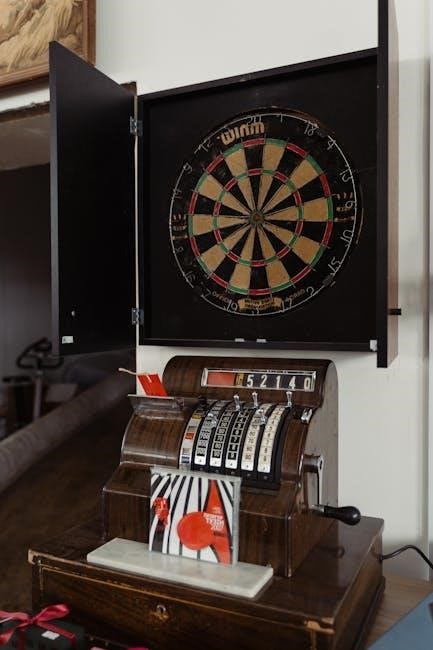
The Lippert Electronic/Hydraulic Leveling System is a advanced solution designed to stabilize and level recreational vehicles efficiently. It combines electronic controls with hydraulic functionality to ensure precise adjustments. The system is specifically engineered for leveling purposes and should not be used for servicing under the coach. It features auto-level mode for automatic adjustments and manual mode for precise control. Key components include hydraulic jacks, sensors, and a control panel. The system ensures safety by preventing improper usage and provides clear feedback through an LCD display. Proper operation requires the vehicle to be parked on a reasonably level surface. This system enhances comfort and stability, making it an essential tool for RV owners.

1.2 Importance of the Troubleshooting Manual
The troubleshooting manual is essential for diagnosing and resolving issues with the Lippert Leveling System. It provides step-by-step guides to address common problems, such as error codes, system malfunctions, and jack operation failures. By understanding these procedures, users can ensure safe and effective system performance. The manual helps prevent improper usage and potential safety hazards by offering clear solutions. It also aids in maintaining the system’s longevity through proper troubleshooting techniques. Regular reference to this manual ensures that users can handle issues promptly, minimizing downtime and ensuring optimal functionality. It serves as a critical resource for maintaining operational efficiency and safety.
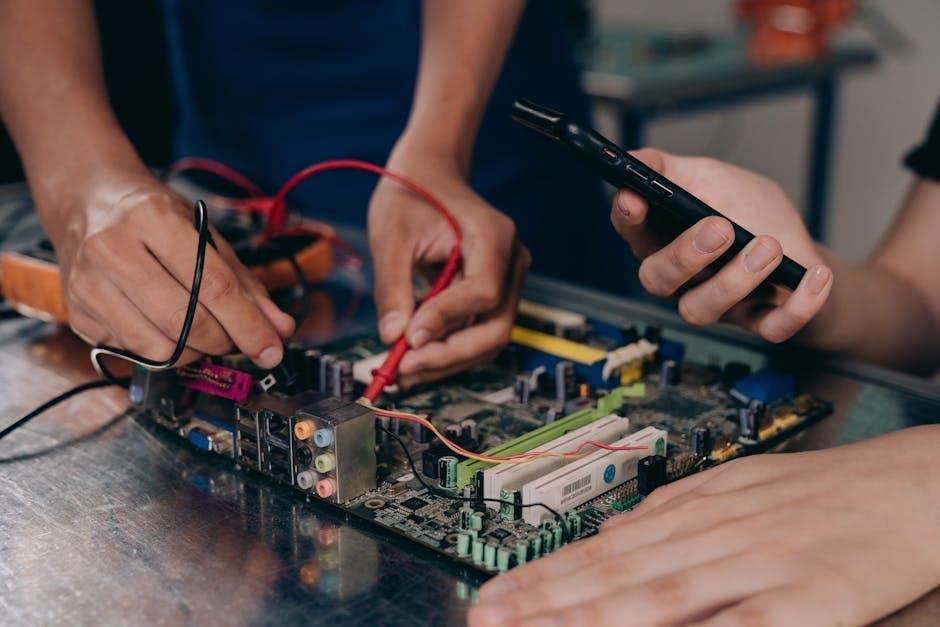
System Components and Functionality
The Lippert Leveling System includes electronic/hydraulic components designed to stabilize and level your unit efficiently. Key parts like jacks, sensors, and pumps work together to ensure precise adjustments.

2.1 Major Components of the Lippert Leveling System
The Lippert Leveling System comprises several key components, including electronic/hydraulic jacks, sensors, a control panel, and hydraulic pumps. The jacks are responsible for lifting and stabilizing the unit, while sensors monitor the system’s performance and ensure accurate leveling. The control panel serves as the central interface, allowing users to switch between auto and manual modes. Hydraulic pumps provide the necessary power to extend or retract the jacks. Together, these components work seamlessly to maintain balance and stability, ensuring a safe and comfortable experience for users. Proper maintenance of these parts is essential for optimal functionality and longevity of the system.
2.2 Understanding the Control Panel and Jacks
The control panel is the central interface for operating the Lippert Leveling System, featuring buttons for Auto Level, Front, Rear, Left, and Right functions. Each button activates specific jacks or modes, such as manual control for individual jacks. The LCD display provides real-time feedback, showing the system’s status, active mode, and any error codes. The power button turns the system on/off, while the Auto Level button initiates automatic leveling. The jacks are part of an electric/hydraulic system designed for leveling and stabilization. Proper use ensures safe and efficient operation, avoiding prohibited practices like using the system for servicing under the coach. Always refer to the manual for detailed button functions and safety guidelines.
2.3 Role of Sensors and Hydraulic Pumps
The sensors in the Lippert Leveling System play a crucial role in detecting the coach’s orientation and tilt, ensuring accurate leveling. These sensors communicate with the control panel to determine necessary adjustments. Hydraulic pumps are responsible for powering the jacks, extending or retracting them as needed to achieve a level position. Proper function of both sensors and pumps is essential for smooth operation. If sensors malfunction, the system may not level correctly, while pump issues can prevent jacks from moving. Regular inspection and maintenance of these components are vital to ensure reliability and avoid operational errors. Always follow the manual’s guidelines for troubleshooting sensor or pump-related problems.

Safety Precautions and Operating Conditions
Always adhere to safety guidelines when operating the Lippert Leveling System. Ensure the unit is parked on a level surface and avoid using the system for servicing under the coach. Proper operating conditions and precautions are essential to prevent accidents and system damage.
3.1 Essential Safety Guidelines
Before operating the Lippert Leveling System, ensure all safety precautions are followed. Always park on a level surface and avoid using the system for service under the coach. Never attempt to change tires or perform maintenance while supported by the leveling system. Ensure all individuals and pets are clear of the unit during operation. Properly stabilize the coach before engaging the system. Failure to adhere to these guidelines may result in injury or damage. Always refer to the manual for detailed safety instructions and operating procedures to ensure safe and effective use of the leveling system.
3.2 Proper Operating Conditions for the Leveling System
The Lippert Leveling System should only be operated under specific conditions to ensure optimal performance and safety. Always park the unit on a reasonably level surface before activating the system. Avoid operating the system if the surface is uneven or unstable, as this may lead to improper leveling or damage. Ensure the trailer or coach is parked on firm, level ground and that all wheels are in contact with the surface. Never operate the system while the unit is in motion or unsupported. Proper load distribution is crucial to prevent overloading the jacks. Operating the system under these conditions ensures stability, safety, and prevents potential damage to the leveling system or the unit itself.
3.3 Prohibited Uses of the Leveling System
The Lippert Leveling System is exclusively designed for leveling and stabilizing your unit. It should never be used to support the coach for service purposes, such as changing tires or performing maintenance underneath the vehicle. Using the system for these prohibited purposes can lead to instability, potential collapse, and serious safety risks. Additionally, the leveling system is not intended to lift the coach for extended periods or to bear the full weight of the unit in an unsupported state. Always adhere to the manufacturer’s guidelines to avoid voiding the warranty and to ensure safe operation. Misusing the system can result in damage to the equipment and create hazardous conditions for occupants and bystanders.
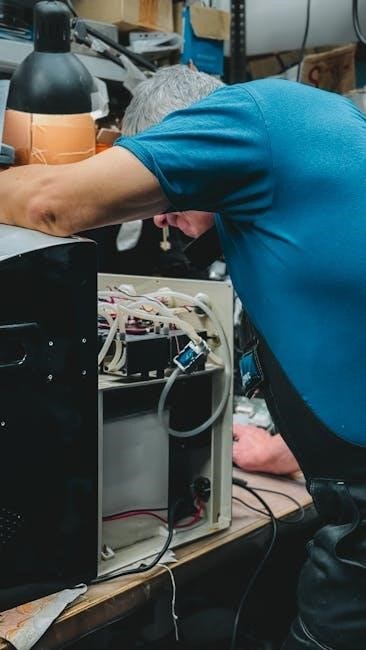
Operating the Lippert Leveling System
Welcome to the operational guide for the Lippert Leveling System. Use the control panel to switch between Auto and Manual modes. Press the Power Button to activate the system, and monitor progress via the LCD display for smooth operation.
4.1 Auto Level Mode: Features and Activation
The Auto Level Mode is a convenient feature of the Lippert Leveling System, designed to automatically stabilize and level your RV. This mode utilizes advanced sensors to detect the unit’s position and adjust the hydraulic jacks accordingly. Activation is straightforward: press the Auto Level button on the control panel, and the system will automatically extend or retract the jacks to achieve proper leveling. The process ensures precision and efficiency, minimizing manual intervention. Always ensure the RV is parked on a reasonably level surface before activating this mode. The Auto Level Mode is a key feature that enhances comfort and safety by providing quick and accurate leveling results.
4;2 Manual Mode: Functions and Controls
Manual Mode allows for precise control over the Lippert Leveling System, enabling individual adjustment of each jack. This mode is activated by pressing the Power Button and selecting Manual Mode on the control panel. The system features directional buttons (Front, Rear, Left, Right) to extend or retract specific jacks. Each button corresponds to a set of jacks, providing flexibility for fine-tuning the RV’s position. The LCD Display shows the current status of the jacks and any error messages. Manual Mode is ideal for minor adjustments or when Auto Level Mode is not suitable. Always ensure the RV is on a stable surface before making manual adjustments to ensure safety and proper leveling.
4.3 Understanding the Power Button and LCD Display
The Power Button is the primary control for activating and deactivating the Lippert Leveling System. Pressing it once turns the system on, initiating a self-test, while pressing it again shuts the system off. The LCD Display provides real-time feedback, showing the current mode (Auto or Manual), jack positions, and error codes. It also guides you through the leveling process with clear instructions. The display alerts you to system malfunctions or improper usage, ensuring safe operation. Always monitor the LCD Display during system operation to promptly address any issues, such as uneven surface detection or hydraulic malfunctions, and refer to the troubleshooting guide for solutions. Proper use of these features ensures efficient and safe leveling of your RV.
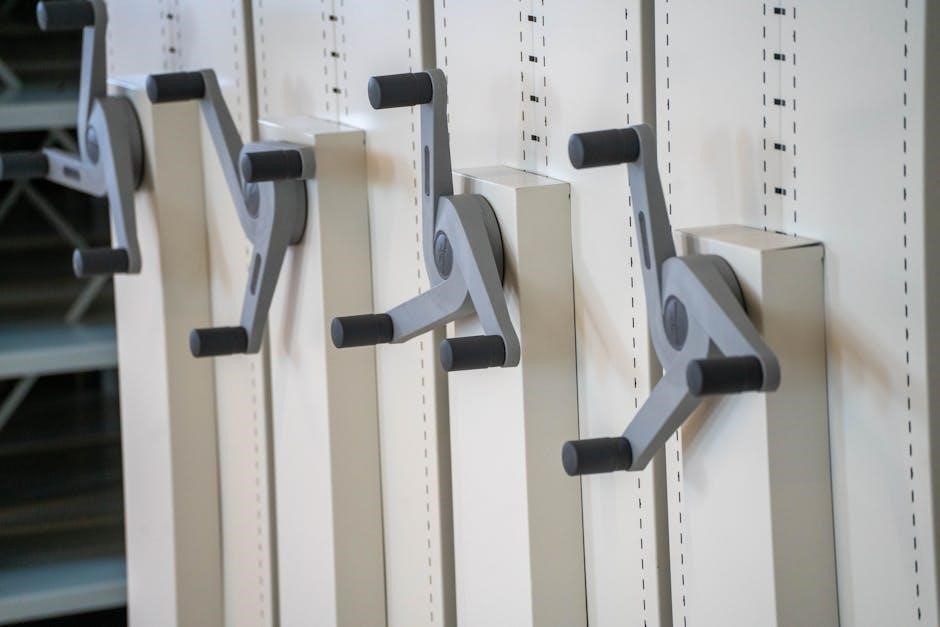
Troubleshooting Common Issues
This section addresses frequent problems, such as uneven leveling, jack malfunctions, and error codes. Refer to the manual for step-by-step solutions to resolve these issues effectively and safely.
5.1 System Not Leveling Properly
If the Lippert Leveling System fails to level your unit correctly, ensure the surface is reasonably level and free from obstacles. Check for sensor malfunctions or loose connections. Verify that all jacks are functioning and fully extended. If issues persist, activate the manual mode to test individual jacks. Consult the error codes on the LCD display for specific fault diagnoses. Ensure the system is calibrated correctly and not in retract mode. Refer to the troubleshooting guide for detailed steps to resolve leveling inaccuracies and restore proper functionality. Always follow safety guidelines when addressing system malfunctions to avoid potential hazards or damage.
5.2 Jacks Failing to Extend or Retract
If the jacks fail to extend or retract, first ensure the system is in the correct mode (auto or manual). Check for hydraulic fluid leaks or low levels, as insufficient fluid can impair jack operation. Verify that the power button is functioning and the LCD display indicates normal operation. Inspect the jack’s electrical connections and ensure they are secure. If a jack is stuck, avoid forcing it, as this may cause damage. Use the manual override feature if available. Consult the error codes on the display for specific issues. Contact Lippert support if problems persist after basic troubleshooting steps. Always refer to the manual for detailed diagnostic procedures to resolve jack malfunctions effectively.
5.3 Error Codes and Alarm Conditions
The Lippert Leveling System displays error codes to identify specific issues. Common codes include “E1” for sensor malfunctions and “E2” for hydraulic pump failures. Alarm conditions may occur due to uneven surfaces, low hydraulic fluid levels, or obstructed jacks. Always refer to the LCD display for error code details. Address the issue by checking sensors, ensuring proper fluid levels, and clearing obstructions. If alarms persist, restart the system or consult the troubleshooting guide. Ignoring error codes can lead to system damage. For unresolved issues, contact Lippert support for assistance. Regular system maintenance can help prevent recurring error conditions and ensure optimal performance.
5.4 Power Issues and System Malfunctions
Power issues with the Lippert Leveling System can occur due to low battery voltage, faulty electrical connections, or blown fuses. If the system fails to power on, check the power source and ensure all connections are secure. Intermittent operation may indicate loose wires or a malfunctioning power button. If the system shuts down unexpectedly, inspect for overheating or tripped circuit breakers. To resolve power-related malfunctions, restart the system after addressing the root cause. If issues persist, consult the troubleshooting guide or contact Lippert support. Regularly inspecting electrical components and ensuring proper system maintenance can prevent power-related problems. Always follow safety guidelines when diagnosing electrical issues.
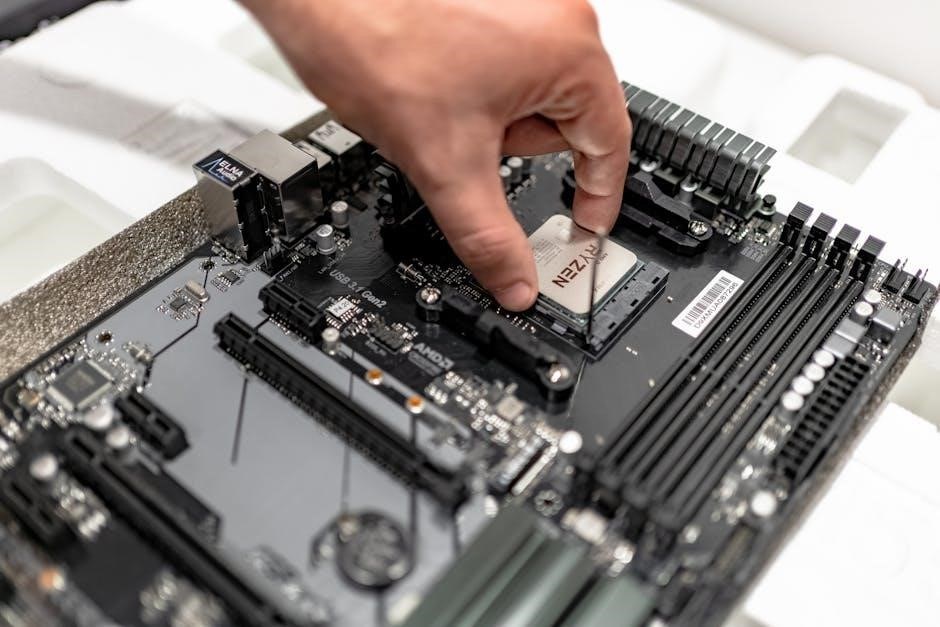
Maintenance and Upkeep
Regular maintenance is crucial for optimal performance. Clean moving parts, inspect hydraulic lines, and check fluid levels. Ensure electrical connections are secure and free from corrosion. Schedule annual professional inspections to identify potential issues early. Winterize the system to prevent damage from freezing temperatures. Replace worn components promptly to maintain reliability and safety. Proper upkeep ensures the leveling system operates efficiently and extends its lifespan. Always follow the manufacturer’s recommendations for maintenance procedures and schedules. Consistent care prevents unexpected malfunctions and ensures smooth operation during travels.
6.1 Regular Maintenance Tasks
Perform routine inspections to ensure optimal system performance. Clean moving parts and check hydraulic lines for leaks or damage. Verify fluid levels and top them off as needed. Inspect electrical connections for corrosion or wear and secure them tightly. Lubricate all moving components annually to prevent rust and friction. Check the system’s sensors and ensure they are free from debris. Test the jacks periodically to confirm proper extension and retraction. Inspect the control panel for any damage or malfunctioning buttons. Replace worn or damaged parts promptly to maintain system reliability. Always refer to the owner’s manual for specific maintenance schedules and procedures tailored to your Lippert Leveling System. Regular upkeep ensures safe and efficient operation.
6.2 Winterizing the Leveling System
Winterizing your Lippert Leveling System is crucial to prevent damage from freezing temperatures. Drain hydraulic fluid and refill with a winter-grade fluid to maintain viscosity. Clean all moving parts and apply a rust-inhibiting lubricant. Protect electrical connections with waterproof sealants to prevent corrosion. Insulate exposed hydraulic lines in extremely cold climates. Retract all jacks and store the system in a dry, sheltered area if possible. Avoid leaving the system under load during winter months, as this can cause hydraulic components to fail. Follow the manufacturer’s guidelines for winter storage to ensure the system remains functional and ready for use when needed. Proper winterization extends the lifespan and reliability of your leveling system.

Additional Resources
Access the full owner’s manual, warranty details, and service information online. Contact Lippert support for assistance or visit their website for troubleshooting guides and technical bulletins.
7.1 Accessing the Full Owner’s Manual
To access the full owner’s manual for the Lippert Leveling System, visit the official Lippert Components website. Navigate to the “Support” section and select ” Manuals” from the dropdown menu. Enter your product details to download the comprehensive guide, which includes detailed instructions, troubleshooting tips, and technical specifications. Ensure you have the latest version for accurate information. This resource is essential for understanding system operation, maintenance, and repair procedures. Regularly refer to it for optimal performance and to address any issues promptly. The manual is available in PDF format for easy access and printing.
7.2 Lippert Warranty and Service Information
The Lippert Leveling System is backed by a comprehensive warranty provided by Lippert Components, Inc. The standard warranty covers parts and labor for a period of two years from the date of purchase. To ensure warranty validity, register your product on the Lippert website within 30 days of purchase. For service inquiries, contact Lippert’s customer support team via phone, email, or through their official website. Additionally, authorized service centers are available nationwide to assist with repairs and maintenance. Always use genuine Lippert parts for any repairs to maintain warranty coverage. For detailed warranty terms and conditions, refer to the official Lippert warranty document available online.
7.3 Contacting Lippert Support
Contacting Lippert support is straightforward for any inquiries or assistance regarding your leveling system. Visit the official Lippert Components, Inc. website to access the customer support page. You can submit a service request online or reach out via phone or email for direct assistance. For immediate help, call their toll-free customer service number. Additionally, Lippert has authorized service centers located nationwide to provide professional repairs and maintenance. When contacting support, ensure you have your system’s model number and a detailed description of the issue for faster resolution. The Lippert support team is committed to helping you troubleshoot and maintain your leveling system effectively, ensuring optimal performance and longevity.
8.1 Summary of Key Points
This manual provides a comprehensive guide to the Lippert Leveling System, focusing on troubleshooting, operation, and maintenance. Key points include understanding system components, operating modes (Auto Level and Manual), and essential safety precautions. Regular maintenance tasks, such as hydraulic fluid checks and sensor calibration, ensure optimal performance. Troubleshooting sections address common issues like jack malfunctions and error codes. Always operate the system on level surfaces and avoid using it for lifting or servicing. Refer to the full manual for detailed instructions, and contact Lippert support for further assistance. Proper usage and care will extend the system’s lifespan and ensure reliable performance.
8.2 Final Tips for Effective System Usage
To maximize the performance and longevity of your Lippert Leveling System, always follow the manufacturer’s guidelines and safety precautions. Regularly inspect the jacks, sensors, and hydraulic components for wear or damage. Ensure the system is used only for leveling and not for lifting or servicing. Operate the system on a stable, level surface to avoid misalignment. Familiarize yourself with the control panel and understand the difference between Auto Level and Manual modes. Keep the system well-maintained, and refer to the troubleshooting section for quick solutions to common issues. By adhering to these tips, you can ensure safe, efficient, and reliable operation of your Lippert Leveling System.


